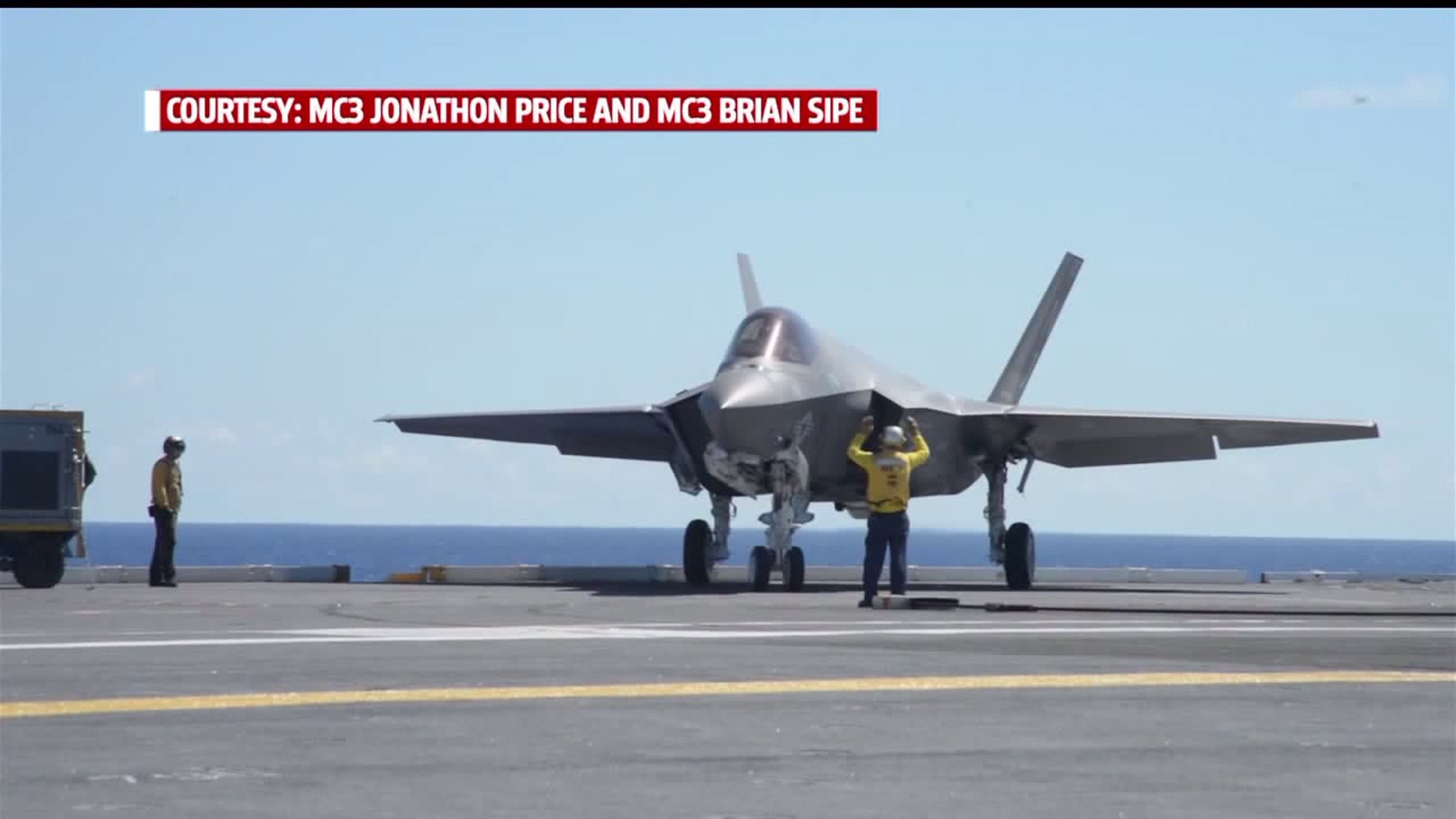The U.S. Navy is is looking to the F35-C to become the future of air combat aircraft to eventually replace some of the aging legacy F18's. According to pilot Captain Rick Crecelius, the F35C is a fifth generation fighter jet jam-packed with technological upgrades. "It's indescribable. The leap in capability that is made between the legacy platform and the F35."
Captain Rick Crecelius, call sign "Slash", has been a navy pilot for 25 years. He flies the new F35C and says the difference is immediately noticeable. "The piloting is almost an after thought. It's so easy to fly. Taking off and landing. Even the guys who are taking it out to the carrier right now say, 'Wow this thing is really super good to the pilot'. It's a pilot friendly airplane to land on the boat."
In the cockpit, the traditional knobs and control switches are essentially gone. Crecelius says "No switches. Everything is like having a big giant iPad slapped on the dash. And that's how you interact with the airplane."
To get a closer look at what makes the F35C so unique, I got a chance to take a spin, so to speak, in the F35C simulator in Norfolk Virginia. Lieutenant Commander Graham Cleveland, call sign 'Boss', showed me the ropes. He pointed out another major difference. That is, the traditional center joystick has been replaced with two joysticks. One on either side of the pilot. Cleveland says, "Yeah. So everything I've flown before the stick was always in the middle. I thought it was going to take a long time to get used to. It doesn't. It's really easy." Cleveland also says all the additional technology really helps the pilot especially landing on an aircraft carrier. "We have to fly the perfect airspeed to fly the perfect angle of attack. In order to put the hook in the right position and to catch the wire. This jet takes care of that for you. It puts your jet in the perfect position. So that's just one less thing as a pilot that you have to worry about."
Both pilots say the F35C was designed for to be stealthy. To be able to see the enemy long before the enemy sees them. Crecelius says, "F35 was built from the ground up to avoid enemy detection- or limit the enemies' ability to target the airplane. That allows the airplane to go into a very high threat environment where some of the legacy platforms cannot because they'll be targeted."
One of the other interesting things about the F35C is actually the helmet. There is a lot of technology packed into it. At a cost of about a half million dollars, the helmet is interactive with cameras located all around the airplane. Where ever the pilot turns his or her head- that's the view of the camera they see in the visor. "It immediately puts the projected image from the camera down your line of sight and shows you. So I could look through the floor of the airplane and see exactly whats underneath me day or night."
It is high-tech data that can help pilots and others make critical decisions. Data that can be shared with other pilots and ships. The newest generation of highly sophisticated navy fighter jet that so far is getting rave reviews. "Getting out on the runway. Running that huge Pratt and Whitney engine up. Feeling that fire-breathing dragon right behind you and then launch off the runway. It was absolutely spectacular. And as soon as you are airborne everything goes quiet. You call up your iPad and start executing the mission. Magical!"
A version of the F35 is already being used by U.S. Air Force and the Marines. The U.S. Navy is still testing the F35C version and has not yet named it combat ready.

